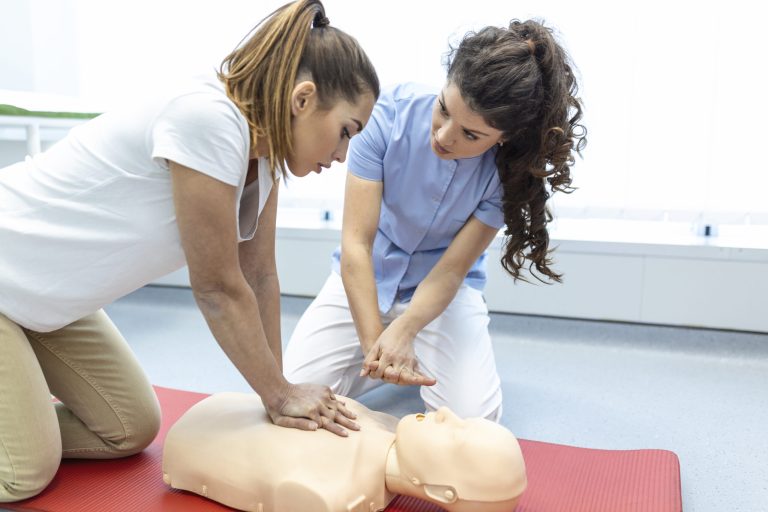When an emergency strikes in the workplace, every second counts. In situations where a coworker suddenly collapses or stops breathing, knowing how to perform CPR can make a critical difference. While waiting for medical professionals to arrive, bystanders are often the first and only chance the victim has at survival. In office buildings, warehouses, construction sites, and retail stores, having trained individuals who can respond swiftly and correctly can mean the difference between life and death. CPR is not just a life-saving skill—it is a workplace necessity that builds safety, trust, and preparedness across any organization.
Immediate Action Can Save Lives at Work
Understanding how to respond effectively during those initial moments before emergency services arrive is key to improving outcomes. Employees equipped with CPR training are more likely to act confidently and maintain calm under pressure, helping stabilize the individual until help arrives. A quick response can help prevent irreversible brain damage or death from lack of oxygen.
Recognizing Cardiac Arrest in Workplace Settings
Workplace emergencies don’t always begin with obvious signs, and cardiac arrest is no exception. Sometimes, the victim simply collapses or appears faint and disoriented. This confusion can delay action, especially in workplaces where employees assume someone else will respond. Immediate recognition of cardiac arrest—characterized by sudden unresponsiveness and absence of normal breathing—is crucial. Time plays a defining role; every minute without CPR reduces the chance of survival by roughly 10 percent. In busy or high-stress environments, such as factories or commercial kitchens, employees must quickly assess whether a situation calls for CPR. One challenge is that some individuals hesitate to get involved, fearing they might do something wrong. However, modern CPR training is designed to simplify the process, giving people the confidence to act rather than freeze. The skills taught are universally applicable, and while no situation is ever identical, the core actions—calling emergency services, beginning compressions, and using an AED if available—form the foundation of a timely response.
Workplace Preparedness Through Regular CPR Training
A proactive approach to CPR training ensures that staff are prepared to respond long before an emergency happens. The goal is to cultivate a safety-first culture where knowledge is widespread, and action becomes second nature. Training sessions should be conducted periodically and integrated into workplace safety programs. For those in leadership or safety roles, participation sets an example that can encourage others. Enrolling in cpr courses is one of the most effective ways to create a team ready to intervene when someone’s life hangs in the balance. These courses offer practical demonstrations, allow hands-on practice with mannequins and AED devices, and address common fears or misconceptions. Workplaces that prioritize this form of preparation typically see better coordination during emergencies, reduced response times, and improved overall confidence among employees. In environments with high foot traffic or physical labor, this can become an essential layer of protection—not just for workers, but for clients, customers, and visitors as well.
The Psychological Readiness to Act Under Pressure
Knowing CPR is one part of the equation, but being mentally ready to perform it under pressure is just as important. Emergencies can trigger panic, especially when someone witnesses a peer collapse or struggles to breathe. Emotional readiness helps bridge the gap between knowledge and action. People who undergo realistic CPR drills tend to respond more effectively, as the simulations provide a sense of what to expect. These exercises help reduce anxiety, increase muscle memory, and make the individual’s response more automatic. Having clear roles within the workplace response plan also contributes to psychological readiness. If employees know who is responsible for calling emergency services, who is trained in CPR, and where the AED is located, the response becomes quicker and more coordinated. It’s also beneficial to include a debriefing process after any emergency event. Talking through what happened, what went well, and what could be improved reinforces learning and reduces long-term emotional stress among those involved.
Maintaining CPR Readiness Beyond Initial Training
A workplace CPR strategy should not end with a single training session. Over time, people may forget the finer details, particularly if they don’t regularly refresh their knowledge. Refresher courses, mock drills, and visible reminders—such as posters outlining compression technique—can keep CPR skills top of mind. AED devices should be regularly checked to ensure they are functional and easy to access. Locations of these devices must be known to all employees and should never be obstructed. Incorporating CPR awareness into monthly safety briefings or emails can also help maintain a culture of readiness. Having a designated CPR and first aid lead on each shift or floor level adds a layer of accountability that supports long-term engagement. New employees should be introduced to the emergency response plan during onboarding, so no one is left uncertain during a crisis. These ongoing efforts create a responsive environment where help is never far away when the unexpected occurs.
Conclusion
CPR in the workplace is more than a training requirement—it is a commitment to protecting life before professional help can take over. Emergencies often unfold with little or no warning, but with the right preparation, employees can respond quickly and effectively. From recognizing signs of cardiac arrest to performing chest compressions and deploying AEDs, each action makes a difference. Creating a culture of preparedness through ongoing training, mental readiness, and clear emergency planning ensures that more lives can be saved. Every worker has the potential to become a vital first responder, and with the right knowledge, they’re ready when it matters most.
